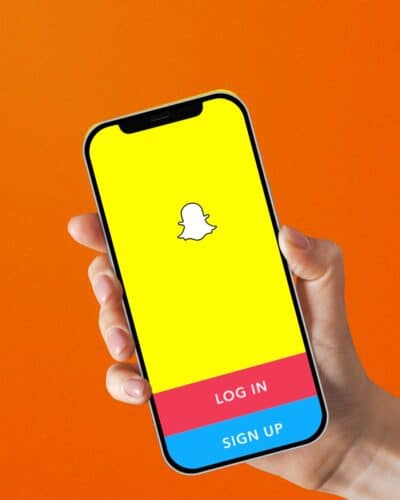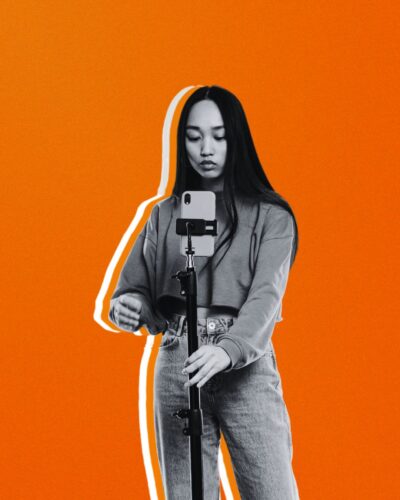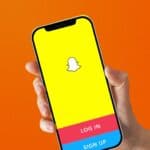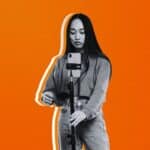Influencer marketing has become a driving force for authentic and results driven performance advertising. What are the benefits of working with influencers? And how can your brand use a social-first approach to tap into a growing conversation?
What is influencer marketing?
Influencer marketing has become a mainstream method of online marketing. Despite breaking the barrier between online and mainstream culture, people still pose the question, “What is influencer marketing?”
Influencer marketing puts the notion of celebrity endorsement and places it into a content-driven marketing campaign. However, influencer marketing focuses more on the social native influencer, as opposed to celebrities.
Brands have discovered the power that leveraging influencer content holds. With influencers spending years growing their audience, brands are able to tap into a loyal fanbase by enlisting influencers to promote their products.
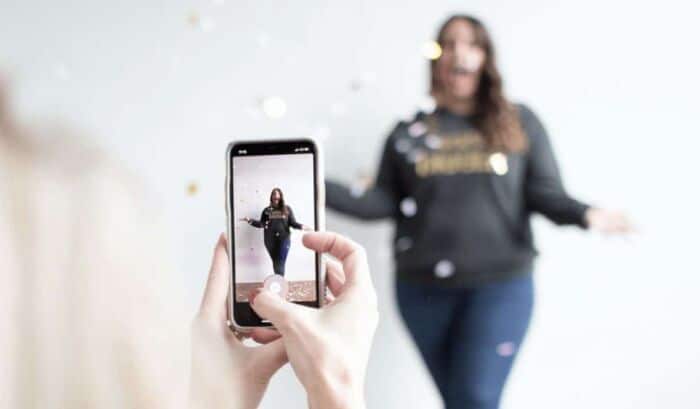
7 Benefits of Influencer Marketing
1. ROI
Influencer marketing has proven its effectiveness. Studies show that the ROI is 11 times that of using banner ads. On average, businesses and brands profit $5.20 for every dollar they spend on influencer marketing campaigns. It’s no surprise that 67% of brands planned to increase their influencer marketing budget in the next 12 months.
ROI can be measured through web traffic, social media engagements, and e-commerce sales. For social media, working with creators can help improve both follower count and engagement rate through connections that drive positive sentiment. Through an e-commerce lens, influencer marketing offers a unique way of driving conversions through authentic content.
Creators can provide brands with better content at a lower cost than traditional advertising. Social-first creators are tapped in, part of their job is to keep on top of current trends across platforms like TikTok where behaviors change each day. Brands can plug directly into online audiences, trends and conversations which will help to determine a means for ROI.
2. Keep up in digital times
Leveraging influencers and creator-made content provides brand with access to the here and now on social media. Creators are tasked with staying on top of developing trends as a means of growing their following.
The internet and social media move at an increasingly fast pace. Whether it’s keeping up with the latest trends, platform updates or emerging platforms in their own right, creators are the first to know.
It is common for social media platforms like TikTok, Instagram and YouTube to regularly churn out new updates and features. These platforms will push out beta tests to creators before releasing to the public, giving influencers the best insight into the future on social media.
3. Credibility and trust
Recommendations from influencers are more important amongst Gen Z than those from friends or family. We’re seeing the influence (no pun intended) that creators hold, which has only grown stronger over time.
Influencers carry so much value thanks to their connection to their individual fanbases. Their followers pay attention to their guidance, which is far more impactful than some copy drawn up by an advertiser.
4. Brand awareness
Influencer marketing is the most popular and effective method of generating authentic content for your brand, building a social presence and developing brand awareness.
Building brand awareness through influencer marketing draws from word-of-mouth marketing. For example, a brand posting about how their product is better than everything else on the market screams advertisement. On the other hand, you have an influencer with an already established and trusted audience, whose opinions are respected, talking about how much they love a brand’s product. Which are you more likely to resonate with?
5. Reach your target audience
Creators on social media have spent years building their profile, audience and niche. There are hundreds of niches cast across the likes of YouTube, TikTok and Instagram, which means there are communities dedicated to watching content around those niches, sometimes in the tens to hundreds of millions.
Take TikTok for example, creators can be found across almost any vertical you can imagine. Interested in metal work and working with molten metal? TikTok has creators and communities dedicated to that. Are you trying to reach audiences in new territories? The power of social brings creators from any and all regions to your fingertips, enabling brands to expand into unknown territory.
The point is, whatever or whoever it is you’re trying to target, there is a community out there following a creator that can help you join the conversation.
6. Supports other marketing efforts
With influencers being present across multiple social media platforms, brands can implement a multi-channel marketing strategy.
This could mean partnering with an influencer with a following on Twitch, YouTube and TikTok, or it could mean working with multiple influencers across different platforms. It’s integral to identify your target audience prior to a decision on which platform to launch on, this will determine how effective each platform will be.
When done right, brands can utilize a range of content formats that are available across the various social media platforms. Every brand will interpret a successful campaign differently, but an example of one might be to partner with a gamer for a sponsored livestream on Twitch, whilst running short-form content across Instagram Reels and TikTok.
Each platform has its own infrastructure and will cater to different brands in a lot of varying ways. Head to our platform education pages for further information on how social media platforms work.
7. Influencer marketing works on most social media platforms
The great thing about influencer marketing is that it extends to all of the major social media platforms including: YouTube, Instagram, TikTok, Twitter, Facebook, Twitch, Snapchat and Pinterest.
Of course, some platforms are more popular and better designed for influencer marketing than others. Instagram has been the preferred platform for brands looking at influencer marketing, with its dynamic content offerings, along with YouTube. TikTok is fairly new on the block, but is scaling at a rapid rate with some of the largest creators on the internet.
When shouldn’t brands use influencer marketing?
When it’s inauthentic
Influencer marketing requires clear and concise deliverables. It is not just about finding someone with an audience and offering them money or exposure so they can promote your brand.
Influencers have spent time building their own brand and cultivating their audience, and as a result will try to protect their reputation. Online audiences share a genuine connection with their favorite creators and are quick to detect an inauthentic partnership. With that being said, many influencers will decline partnership opportunities if the message does not resonate with their personal brand.
Inauthentic partnerships are spotted from a mile away. Influencer marketing requires innovation, not an online figure standing in front of a camera promoting a product that only a paycheque could force them to enjoy.
When your business isn’t ready
Influencer marketing is not a quickfire method to ensure success, especially if your brand has not determined any goals or spent time building an organic online presence. Furthermore, if you were to implement an influencer marketing strategy without predetermined goals, how would you measure the metrics for success – what metrics would even determine a successful launch?
To run a successful influencer campaign, brands should first lay the foundation, and determine their goals in order to track success.
When you don’t know your target audience
Going into an influencer activation without prior knowledge or understanding of who you want to target is guaranteed failure.
You could be a brand offering DIY equipment or supplies, who without prior planning, partners with a gaming influencer who’s primary audience consists of stay-at-home Gen Zers. This activation, in theory, makes no sense. On the surface, your ad may receive a high number of impressions and engagements, but are those metrics coming from the right source.

The evolution of influencer marketing
Influencer marketing has encountered a shift towards authenticity. For years, there has been talk of fraud and inauthenticity through brushed up photos and the use of filters.
In 2023, transparency and authentic content remains key. We’ve seen the rise of the body confidence movement and activity influencer who strives for fair inclusivity. In years gone by, brands may have just enlisted a large creator to draw upon their large audience. Brands today realize that the value lies within engagement, hence the popularity of micro and macro influencers.
Influencer content is quick and cost-effective. Not to mention, its authentic, relatable and diverse, which is why it performs better than studio-shot creative.
Does influencer marketing work?
Influencer-generated content performs better in comparison to branded posts. 61% of consumers trust influencer recommendations, compared to 38% who trust brand-led content.
60% of marketers shared that influencer content performs better and drives more engagement than brand content.
Influencer marketing works.
Why influencer marketing works
Influencer marketing is so effective because it leverages what social media users like best about a particular platform.
Today, content is community driven, meaning creators aim to deliver what their audience wants. Attaching brand messaging and endorsements helps users actively engage with brands in an authentic way, and actively seek out that brand after hearing their favorite creator’s endorsement.
Brands that use influencer marketing
Beauty Industry
Nivea – Goat has worked with Nivea across many influencer campaigns. Developing strategies that are product and campaign specific, while keeping aligned with Nivea’s tone of voice. We have raised awareness of new product launches, read social conversations, reacted to PR and managed influencers representing Nivea.
Campaigns have included MicellAir, which reinforced the makeup removal range as makeup artists’ favorite within millennial audiences; Q10 Power – a Mother’s Day campaign that created conversation on anti-aging around the nostalgic Nivea creams; Q10 Gradual Tan, which targeted female audiences over 45 in the UK at the start of spring, empowering them to bare their legs during summer and Nivea Men & LFC, which targeted a young male audience, educating them on the importance of skin care whilst also opening up conversation around mental health and loneliness.
The results? Over 39 million impressions have been generated across all campaigns, and 21 million engagements on 1,300 pieces of content.
Tech Industry
Dell – We now deliver all influencer activity for Dell across a variety of global markets.
We work as part of an ‘all-agency’ team working alongside the media and creative agency of record to deliver against ambitious goals. Objectives and strategy differ by market and business unit, however the Goat team is structured to ensure consistency of communication, measurement and reporting at a global level.
Our activity ranges from long term ambassadors all the way through to specific short term activations. The platform mix has included Instagram, Facebook, YouTube, TikTok, Snapchat, Linkedin and Twitch.
Over a seven month period, we generated over 168 million impressions, 23.6 million engagements, 229,000 clicks made throughout the campaigns and increased our click rate by 631%
Sports Industry
Formula E – Working with Formula E, we were tasked with increasing TV viewership, driving ticket sales and increasing the engagement on social media around the electric racing series.
Delivering a truly global strategy, we activated both global hero influencers, and a layer of smaller, local influencers, to every race on the calendar, from Santiago to Hong Kong. We leveraged influencers on Instagram to create content designed to drive awareness and growth of the sport and really showcase the fast-paced action and overall experience of a Formula E race.
We also worked on the revolutionary YouTube-live show, Voltage, which broadcast Formula E races live with the help of some of YouTube’s most recognizable faces. This gained over 500,000 views an episode and showed a glimpse into the future of sports broadcasting for millennials. Lastly, we partnered with Formula E as a distribution outlet for their vast array of video content. On this, we delivered over 40m video views in Season 4 alone and ensured hundreds of millions of people were introduced to the Formula E brand.
We drove 105 million views across all content, a total of 144.5 million impressions across the campaign duration. The campaign received 10.3 million engagements over 3,300 total posts.
Food & Drink Industry
Beefeater – We were tasked with delivering an activation to drive engagement, cut-through and cultural relevance across the UK, US, Australia, Denmark and France.
We devised a hashtag that would speak directly to millennials across the key markets:
#OnWednesdaysWeDrinkPink
Our consumer research leant on behavioral insights and suggested the movie ‘Mean Girls’ would be a cultural reference applicable to the target market. As you may know, the famous line from the movie is ‘On Wednesdays we wear pink’.
We leveraged local market influencers to create content with a ‘pink focus’ and we ensured content only went live on Wednesdays. The result was incredible, consumers loved the hashtag and jumped on board. We saw a huge uptake in UGC every Wednesday across the campaign term.
We also developed a bespoke influencer cocktail guide and gifted cocktail kits along with Pinterest inspired tips and branded carafes to ensure the content was tantalisingly ‘Instagrammable’
This saw organic user-generated content grow by 1500% month-on-month, #OnWednesdayWeDrinkPink was trending on Instagram in the UK, over 4 million Instagram engagements and over 3.5 million Instagram Story views.
So why brands should use influencer marketing?
The benefits of influencer marketing speak for themselves. Influencer have a unique grip over the marketing industry, which your brand can tap into to increase brand awareness, drive sales and grow your business through multiple channels.
As one of the first movers in the influencer marketing space, The Goat Agency have over seven years of expertise in content creation and performance marketing through influencers.
First-hand we’ve seen the development of the industry, monitoring and implementing the latest trends and strategies to deliver successful influencer-led campaigns across the globe.
To hear more about what we offer, and how to get started with influencer marketing, visit our service page or get in touch.
To stay up to date will all our social media insights, don’t forget to follow us on LinkedIn, Instagram, TikTok and Twitter for real-time announcements of all our new blog content!
